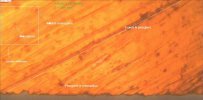- Joined
- Mar 7, 2001
- Messages
- 4,608
David,
My only tested high Va blades is GB M4.
Initially, maintained with white compound + Martin's Washboard, it got sharp, good to be EDU. However it lacks the smoothness to shave my face like cheaper steel (8Cr13MoV) on same compound. Tge 8Cr even got smoother after testing it with green, which also worked well with 52100.
Yesterday I made time & broke out the diamond paste + thin cardboard (those from kleenex), 12, 6, 3, 1, 0.5, 0.25, 0.1um. Tested the M4 on them (stopped at 0.25). It's a world of difference.
My finding mirror the carbide tear out vs fiamond shaping you mentioned.
Thanks for sharing the 'why', otherwise I might still be stubbornly clinging to simple compound (black, white, green). It's no wonder some people stays with simple steel. It's easier to maintain (polished that is) with just old green (CrO?).
@ Vijay, I try copy paste that URL with the code:
[img]http://i.imgur.com/pwcYNF4.jpg
Back to topic, I don't have S30V, but if the Va is the same hardness like M4, I'd suggest get some diamond if you want 1um or better refinement.
My only tested high Va blades is GB M4.
Initially, maintained with white compound + Martin's Washboard, it got sharp, good to be EDU. However it lacks the smoothness to shave my face like cheaper steel (8Cr13MoV) on same compound. Tge 8Cr even got smoother after testing it with green, which also worked well with 52100.
Yesterday I made time & broke out the diamond paste + thin cardboard (those from kleenex), 12, 6, 3, 1, 0.5, 0.25, 0.1um. Tested the M4 on them (stopped at 0.25). It's a world of difference.
My finding mirror the carbide tear out vs fiamond shaping you mentioned.
Thanks for sharing the 'why', otherwise I might still be stubbornly clinging to simple compound (black, white, green). It's no wonder some people stays with simple steel. It's easier to maintain (polished that is) with just old green (CrO?).
@ Vijay, I try copy paste that URL with the code:
[img]http://i.imgur.com/pwcYNF4.jpg
Back to topic, I don't have S30V, but if the Va is the same hardness like M4, I'd suggest get some diamond if you want 1um or better refinement.
Last edited:





![url] [](/proxy.php?image=http%3A%2F%2F%5Burl%5Dhttp%3A%2F%2Fi.imgur.com%2FJqGIaph.jpg%5B%2Furl%5D+%5B&hash=345693f1ee8566de7486e02fcfea70f3)
